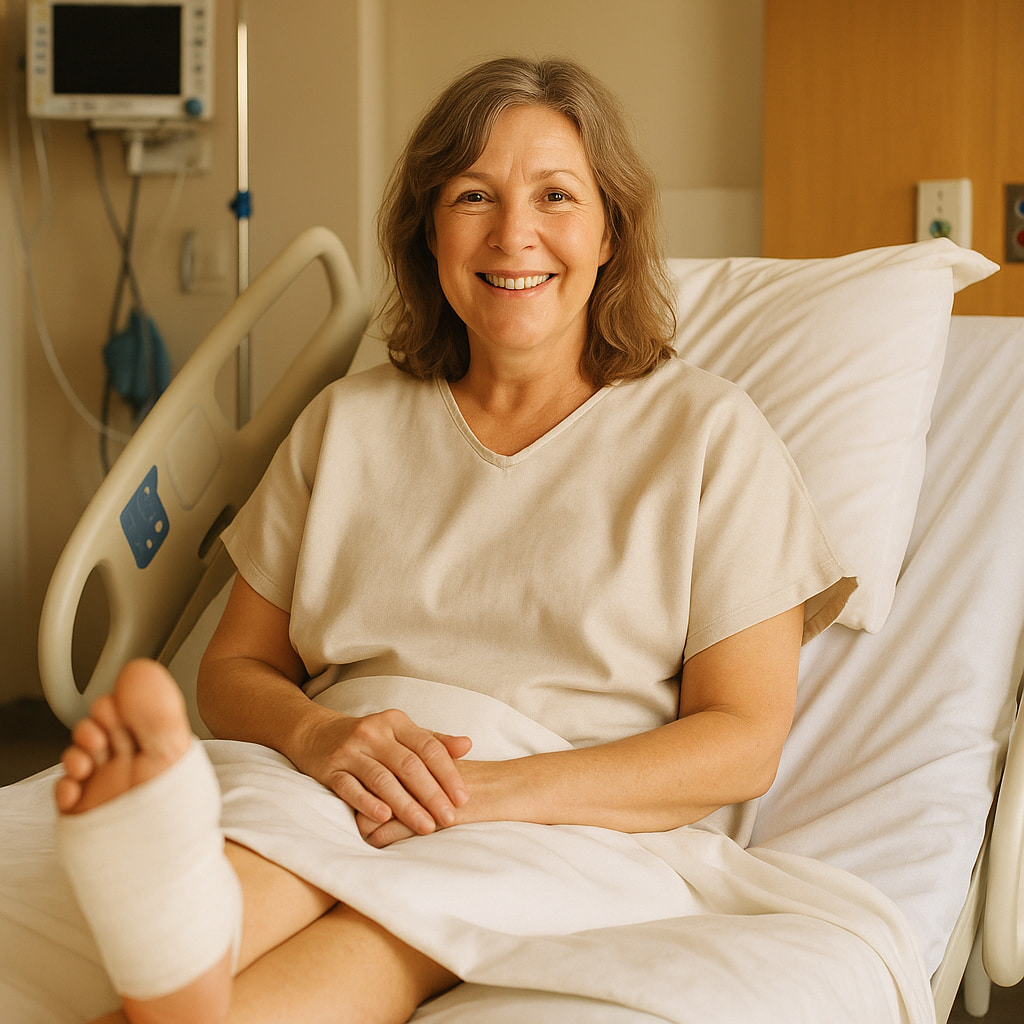See Also
Rehabilitation Goals
- Protect the surgical site and promote healing
- Reduce pain, swelling, and inflammation
- Restore full range of motion (ROM)
- Regain strength and balance
- Return to normal activities and prevent recurrence
Expected Recovery Time
| Milestone | Timeframe Range |
|---|---|
| Wound healing | 2-3 weeks |
| Walking without assistive devices | 3-6 weeks |
| Return to normal shoes | 6-8 weeks |
| Resumption of low-impact activities | 8-10 weeks |
| Full recovery with unrestricted activities | 12-16 weeks |
Phase 1: Early Post-op (0-2 weeks)
Goals
- Protect surgical site
- Control pain and swelling
- Prevent infection
- Maintain mobility in non-involved joints
Instructions
- Keep dressing clean, dry, and intact
- Elevate the foot above heart level as much as possible
- Use prescribed pain medication and/or anti-inflammatories
- Apply ice packs (wrapped in a cloth) for 15-20 minutes, 3-4 times daily
- Use crutches or walker if advised
- Avoid weight bearing unless instructed otherwise
Exercises
- Ankle pumps: 10-15 reps, several times daily
- Toe wiggles (if permitted and pain-free): gentle movements to prevent stiffness
- Quadriceps and gluteal sets to maintain lower limb strength
Phase 2: Intermediate Post-op (2-6 weeks)
Goals
- Gradually increase weight bearing
- Continue to control swelling and pain
- Initiate gentle range of motion
Instructions
- Transition to partial then full weight bearing as advised
- Wear post-operative shoe or stiff-soled shoe
- Continue to elevate foot as needed
- Avoid prolonged standing or walking
Exercises
- Gentle toe range of motion exercises
- Seated towel scrunches (begin at 4 weeks if tolerated)
- Ankle circles and calf stretches
- Seated foot alphabet
- Continue ankle pumps
Phase 3: Strengthening and Mobility (6-10 weeks)
Goals
- Restore full weight bearing without pain
- Improve flexibility, strength, and balance
- Return to normal footwear
Instructions
- Begin transitioning to regular supportive shoes
- Avoid high-impact activities
- Continue home exercises daily
Exercises
- Standing calf stretches
- Towel scrunches and marble pickups
- Balance exercises (single-leg stand on stable surface)
- Gentle stationary cycling or swimming
- Progress to light resistance band exercises for ankle and foot muscles
Phase 4: Functional Recovery (10-16 weeks)
Goals
- Full return to daily and recreational activities
- Maintain strength and flexibility
- Prevent recurrence of symptoms
Instructions
- Gradually resume higher impact activities as tolerated
- Monitor for any recurrence of symptoms
- Wear properly fitting footwear with appropriate arch support
Exercises
- Advanced balance exercises (unstable surfaces, eyes closed)
- Progression to dynamic strengthening exercises
- Light jogging or elliptical (after surgeon clearance)
- Sport-specific drills if applicable
When to Contact Your Surgeon
- Signs of infection (increased redness, warmth, swelling, or drainage)
- Persistent or worsening pain not relieved by medication
- Numbness, tingling, or new neurological symptoms
- Wound reopening or delayed healing
- Any concerns about your progress or unusual symptoms
Disclaimer
This is a general guideline. Your physiotherapist or Dr Lambers may adjust the protocol based on your specific condition and progress.
